Articles about Investigación de usuarios
Cuénteme sus problemas: estrategias terapéuticas para la investigación de la experiencia del usuario

Los terapeutas e investigadores de experiencia de usuario tienen el objetivo de diagnosticar y tratar problemas. La implementación de estrategias centradas en la solución y basadas en pruebas que utilizan los psicoterapeutas podría ser de gran utilidad para los investigadores de experiencia del usuario. [Leer más]
Querido Diario: Uso de Diarios para Estudiar la Experiencia del Usuario
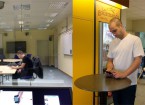
Un diario de UX contiene notas sobre las experiencias en el uso de una aplicación en un entorno natural. Aprenda a utilizar diarios en sus estudios de investigación. [Leer más]
Espera lo Inesperado: Consejos para llevar a cabo Investigación Mundial

La investigación mundial presenta únicos desafíos logísticos y culturales que pueden chocar con los supuestos del investigador y las partes interesadas. Mente abierta y planificación son esenciales para un proyecto exitoso. [Leer más]
Midiendo Percepciones: Logrando el Desafío de la Calidad Percibida
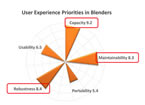
Medir las percepciones de los usuarios es un desafío difícil. La Prueba de la Calidad Percibida (Perceived Quality Test, en inglés) ayuda a los investigadores a cuantificar las percepciones de los usuarios. [Leer más]
Cómo vive la otra mitad: Diseño de la Experiencia de Usuario en Brasil y Nueva Zelanda
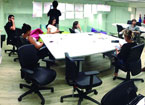
Perspectivas sobre la investigación de la Experiencia de Usuario (UX) mundial de ocho profesionales UX en Brasil y Nueva Zelanda. Las herramientas de investigación, los recursos favoritos, y el amor al trabajo son compartidos en estos dos países tan dispares. [Leer más]
Investigación de UX en las Top 3 economías en América Latina: Lo que deberías saber

Aprende cómo conducir una investigación de experiencia de usuarios de forma efectiva en Brasil, Colombia y México incluyendo tips para reclutamiento, traducción, realización de estudios, observación y diseño de interfaz. [Leer más]
Elegir el método de investigación adecuado: tan fácil como decir 1, 2, 3
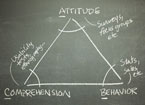
Elegir los métodos de investigación adecuados significa hacer lo que tiene sentido si evaluamos los interrogantes y las limitaciones. Comience con una simple conversación sobre los 3 puntos básicos: actitud, conducta y comprensión. [Leer más]
Hacer portales de salud utilizables: Lecciones de Healthcare.gov

Queremos arreglar los portales web para una iniciativa gubernamental muy importante. Las pruebas de usabilidad con consumidores de la salud ayudaron a mejorar CoveredCA, un portal de California. [Leer más]
Ser un UXer: muy similar a ser un terapeuta

Añade estas habilidades de terapia a tu kit de herramientas de experiencia de usuario para incrementar tanto las experiencias positivas para clientes como para compañeros de trabajo. Tres casos prácticos. [Leer más]
Consejos de clientes: una herramienta de investigación para el desarrollo ágil

Los consejos de clientes ayudan a asegurar una investigación de experiencia de usuario de calidad en una cultura de desarrollo ágil. Estos consejos proporcionan información estratégica y una retroalimentación práctica sobre la usabilidad a lo largo de un proyecto. [Leer más]
Ver para creer (reseña de libro)
Una reseña de Eye tracking the User Experience – A Practical Guide to Research (Seguimiento ocular de la experiencia de usuario: guía práctica para la investigación) de Aga Bojko. Una obra de lectura obligatoria con consejos para llevar a cabo estudios de seguimiento ocular. [Leer más]
(English) Positioning Field Studies for Company and Customers
(English) By understanding and communicating the benefits of field studies, you can maximize your ability to undertake such studies and the effectiveness of the deliverables they produce. [Leer más]
La participación de observadores de campo: un paso subestimado en la investigación de usuarios
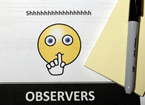
La participación de observadores es un aspecto importante en el estudio de la capacidad de uso. Un poco de trabajo por anticipado puede promover una participación más efectiva de los observadores. [Leer más]
(English) Engaging Users in Product Design: Bridging the Gap from Insight to Strategy
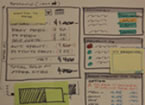
(English) More researchers should partner with their users in targeted research and design activities to help bridge the gap between insight and strategy. [Leer más]
Contradicciones e Implicaciones: Dándole Sentido a un Comportamiento Irracional en Apariencia

¿Tendría sentido que les recomendara a sus amigos productos defectuosos? Las evaluaciones de la usabilidad indican que las conductas que parecen irracionales podrían ser precisamente lo opuesto. [Leer más]
(English) Playing to Learn: Teaching User Research to Game Design Students
(English) Students of Game Player Experience understand the value of user research first hand by learning good game user experience principles and seeing those principles implemented. [Leer más]
(English) Designing with a Service Perspective: A Bronx Tale

(English) The world is heavily reliant on services. User experience and design professionals are primed to apply a service perspective for making these experiences effective. [Leer más]
(English) How Was It for You?: Helping People Describe Their Experiences
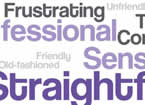
(English) Usability study participants may choose words from a list to assist their feedback. Produc-ing one set of words for an entire user population proves challenging. [Leer más]
(English) Shh. Listen First! Social Networking, Wikis, and User Experience

(English) The age of information is shifting to an age of interaction. To best take advantage of this, learn and observe your users first before collaboration. [Leer más]
(English) Model-driven Inquiry: A Streamlined Approach to Data Collection

(English) Contextual design models can be developed through exploratory modeling, providing a potentially useful framework to guide and speed up the later modeling activities. [Leer más]
(English) User Interview Techniques: Guidelines for Obtaining Better Results
(English) An interview technique review worksheet emphasizes continual improvement and provides an easy way for team members to evaluate a user research interview session. [Leer más]
(English) Deal Them Again: Card Sorting Revisited (Book Review)
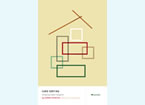
(English) A whole book on card sorting? This book is replete with solid advice, clearly written and illustrated, and well supported by case studies and examples. [Leer más]
(English) What Do You Mean? How to Write Good Questions
(English) When designing forms, a background in survey methodology and social research can facilitate a transition into user-centered design. [Leer más]
(English) Forms on the Go: Usable Forms for the Mobile Web

(English) Designing forms for the mobile web confronts unique challenges that are difficult to test and are not completely in the developer’s control. [Leer más]
(English) Conducting Field Studies with Older Adults Lessons for Recruiting and Testing Older Users

(English) Field testing and field research work especially well with older adults, if you are sensitive to their needs in both the recruiting and data collection process. [Leer más]
(English) Safer Skies: Usability at the Federal Aviation Administration

(English) Study of user communities that make up the air traffic control system and the information, navigation and communication technologies they use. [Leer más]
(English) Zooming In and Zooming Out: Real-life Customer Experience Research

(English) Evolving our customer-centric tools forms the basis for mutual understanding and challenges us to find the optimal moments for integration. [Leer más]
(English) A Clever Startup: Combining Qualitative and Quantitative UX Research

(English) Our Spout project illustrates how smaller organizations and startups can benefit from conducting cutting-edge, integrated qualitative and quantitative user experience research. [Leer más]
(English) The World’s a Stage: Using Acting to Validate a Wearable Product Concept with Users

(English) Acting, when used to validate a wearable product concept, describes the right target group, identifies use situations, and contextualizes issues to be addressed in product development. [Leer más]
(English) Cultural Probes: Understanding Users in Context

(English) Probes force designers to think about the context and motivations of use, thus building a stronger understanding of the target audience and potentially leading to more informed designs. [Leer más]

